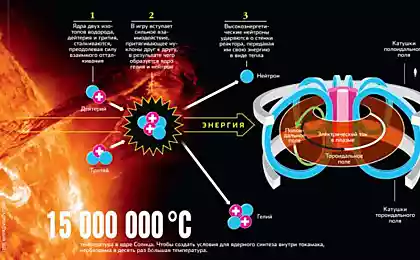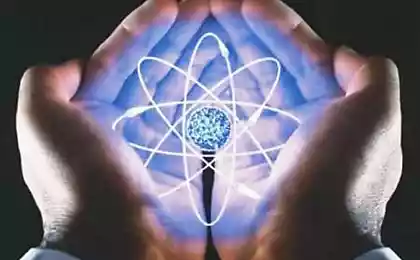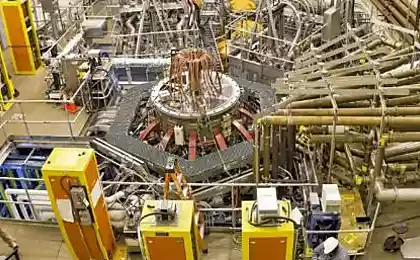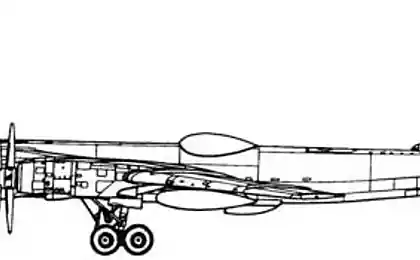516
Fusion reactor of the new generation will be spherical tokamak
Significantly expand the knowledge of scientists about plasma physics will new nuclear fusion plant Fusion Nuclear Science Facility (FNSF), which produces materials and components for fusion reactor. Such a device is capable of becoming a prototype pilot plant that produces net energy.
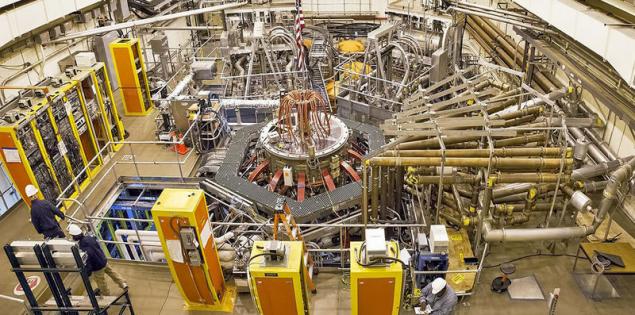
The work of scientists published in the journal Nuclear Fusion, for the construction of combined FNSF that may be experienced by the device and the forerunner of a commercial fusion reactor.
An excellent model for installation FNSF could be spherical tokamaks, say scientists at the plasma physics Lab of Princeton University under the Ministry of energy of the United States. Two of the most modern spherical tokamak in the world is the recently completed NSTX-U in the U.S. and MAST in the UK.

The key feature of this design is the size of the hole in the center of the tokamak, which holds and shapes the plasma. In spherical tokamaks this opening may be half the size of the hole of conventional tokamaks. This difference is reflected in the form of a magnetic field constraining hot plasma has a large effect on the behavior of the plasma.
"The main reason we study spherical tokamaks, is that it can help to find the way to the synthesis at a much lower energy cost than required by traditional tokamaks," says Ian Chapman, the new head of the research program at the research center of Kalam.
The ability of these machines to reproductive creation of plasma within its compact size demonstrates their suitability as potential models for the next generation of fusion devices. A wide range of opinions, calculations and figures, is described in detail in this study confirm the viability of the combined FNSF and pilot installation, based on a spherical design. Device NSTX-U and MAST-U, upgraded with FNSF can be a great prototype for future industrial fusion power plants.
published
Source: ecotechnica.com.ua/technology/1346-termoyadernym-reaktorom-novogo-pokoleniya-stanet-sfericheskij-tokamak.html

The work of scientists published in the journal Nuclear Fusion, for the construction of combined FNSF that may be experienced by the device and the forerunner of a commercial fusion reactor.
An excellent model for installation FNSF could be spherical tokamaks, say scientists at the plasma physics Lab of Princeton University under the Ministry of energy of the United States. Two of the most modern spherical tokamak in the world is the recently completed NSTX-U in the U.S. and MAST in the UK.

The key feature of this design is the size of the hole in the center of the tokamak, which holds and shapes the plasma. In spherical tokamaks this opening may be half the size of the hole of conventional tokamaks. This difference is reflected in the form of a magnetic field constraining hot plasma has a large effect on the behavior of the plasma.
"The main reason we study spherical tokamaks, is that it can help to find the way to the synthesis at a much lower energy cost than required by traditional tokamaks," says Ian Chapman, the new head of the research program at the research center of Kalam.

The ability of these machines to reproductive creation of plasma within its compact size demonstrates their suitability as potential models for the next generation of fusion devices. A wide range of opinions, calculations and figures, is described in detail in this study confirm the viability of the combined FNSF and pilot installation, based on a spherical design. Device NSTX-U and MAST-U, upgraded with FNSF can be a great prototype for future industrial fusion power plants.
published
Source: ecotechnica.com.ua/technology/1346-termoyadernym-reaktorom-novogo-pokoleniya-stanet-sfericheskij-tokamak.html
